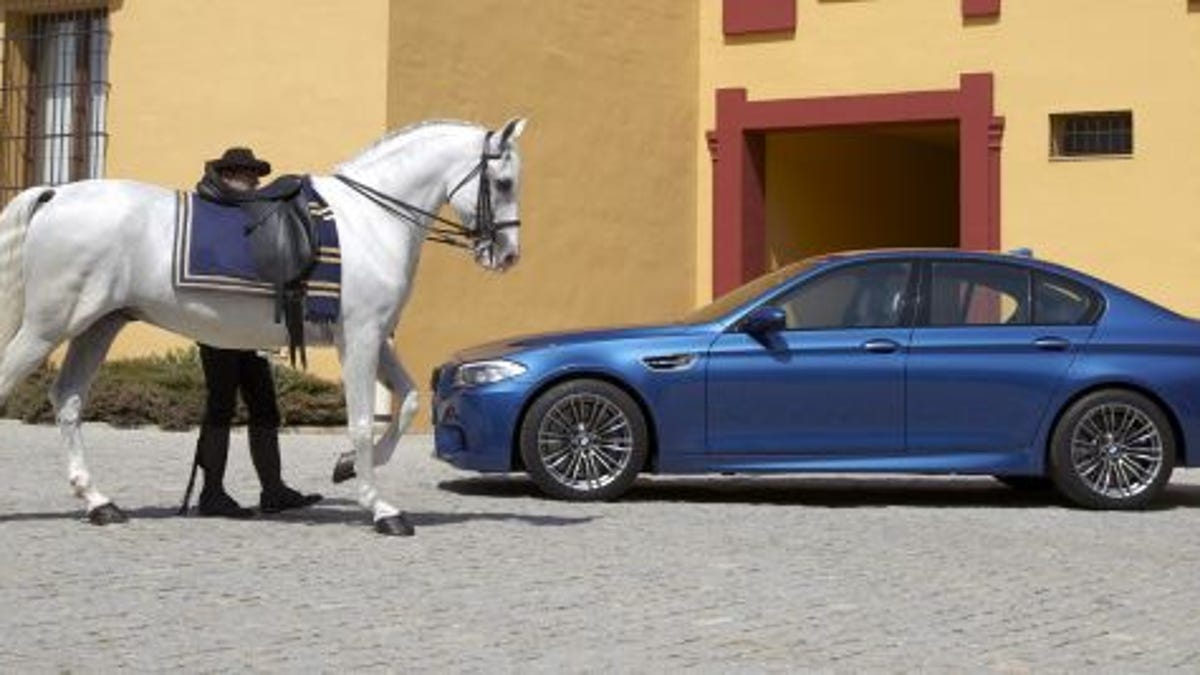BMW M5 generates fake engine noise using stereo
BMW's Active Sound Design tech replicates engine noise inside the M5's cabin using the car stereo's speakers. What ever happened to just rolling down the windows?

For a driving enthusiast, there's nothing like the throaty roar of a well-tuned engine. However, as vehicle noise regulations, technological advances, and general increases in build quality have continued to make vehicles ever quieter both outside and inside, some automakers have been seeking ways to preserve and enhance the visceral sound of an angry engine for their performance-oriented models. For example, Ford includes a sort of sound pipe that channels induction noise into
What BMW has done is link the M5's car stereo system's digital signal processor (DSP) into the engine management system, which allows the audio system to simulate the sound of a twin-scroll, twin-turbocharged V-8 engine in sync with the actual 560-horsepower mill humming away in the engine bay. You'd think that with that much power, the engine wouldn't need any help making noise, but as you rev the engine or accelerate away from a traffic light, the car stereo will be recreating the bark and roar that you'd normally be missing from the driver's seat through the speakers. BMW says that its Active Sound Design system accurately replicates the sound of the engine over the full range of RPMs, torque loads, and vehicle speeds. The system is tied so closely with the ECU that BMW has matched it with the various power-train settings. So, the Sport or Sport+ modes also have simulated audible boost to match their performance boosts.
This is sort of the opposite of the Active Noise Cancellation technology employed by Honda in its
Personally, I'm skeptical that this system adds anything to the driving experience and am a bit worried that asking the speakers to pretend to be a V-8 and accurately reproduce music may be asking too much. At the very least, I hope there's an off button.

